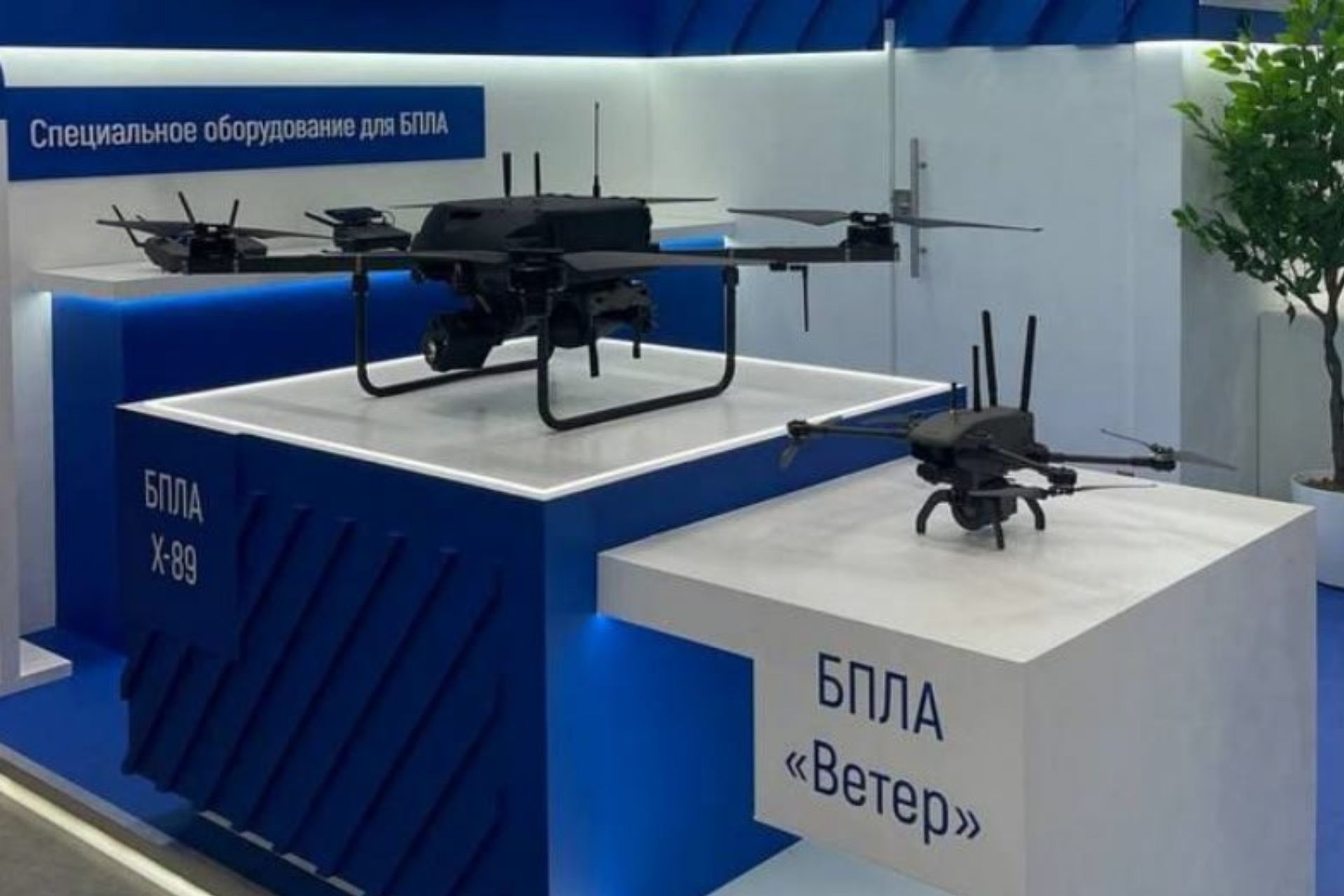Breaking News
Russia Deploys AI-Equipped FPV Drones in Military Operations.
Russia has announced the deployment of FPV drones equipped with artificial intelligence (AI) in military operations. The "Veter" (Wind) drone, developed by a Russian company, is now actively used in special operations. These drones have advanced AI capabilities that allow them to lock onto targets without direct human intervention automatically. Follow Army Recognition on Google News at this link

A key feature of the Veter kamikaze drone guidance system is the presence of an autonomous module with an onboard computer and software algorithms using artificial intelligence technologies (Picture source: X Channel @sambendett )
According to a press release from the developer, the AI of the "Veter" drones enables them to navigate and attack targets automatically without additional input from the operator. Once a target is identified, the drone locks onto it and autonomously flies towards it, ensuring precision even in environments with electronic warfare countermeasures. This capability has been thoroughly tested and verified by the Russian military, confirming the drone's effectiveness in real combat scenarios.
A private Russian company from the Transbaikal region, named Veter, is ready to produce up to 3,000 FPV drones with AI per month. The FPV drones Veter-8, Veter-10, and Veter-13 have been delivered to various branches of the Russian Armed Forces in the special military operation zone. These kamikaze drones are already being actively used on the frontline, as reported by the TG Russian Arms channel. The company's production capacity allows for the production of up to 3,000 drones per month, and more than 6,000 Veter drones have already been used in combat operations.
The drones are equipped with command and telemetry modules using ELRS (2.4 GHz and 900 MHz frequency range) or Crossfire protocols (868 MHz in the EU and Russia or 915 MHz in the USA, Asia, and Australia). These protocols provide the drones with an effective communication range of up to 40 kilometers.
The range is limited by battery capacity and payload weight. The Veter-8 drone, with a payload of up to 2.5 kg, has a range of 10-15 km, the Veter-10, with a payload of 2 to 3.5 kg, has a range of 15-20 km, and the most advanced model, the Veter-13, which can carry up to 8 kg of munitions, has a range of up to 20 km. All models reach a speed of 150 km/h.
A key feature of the Veter kamikaze drone guidance system is the presence of an autonomous module with an onboard computer and software algorithms using artificial intelligence technologies. Target identification and capture are based on loaded templates of optical and infrared target signatures. The module is activated when the drone enters the range of enemy electronic warfare equipment. This hardware and software allow the operator to remain at a considerable distance from the launch site.

Russian media claims the "Rusak-S" AI-enabled FPV drone, now in mass production, autonomously attacks targets like armored vehicles, artillery, and infantry identified via its onboard neural net. (Picture source: Iz.Ru)
Veter has two production facilities in the Transbaikal region and finished product warehouses in Moscow and Rostov-on-Don. The drones are developed by a team of engineers, and the models themselves are created with frontline military needs in mind. The company tests the drones, including under conditions of electronic countermeasures.
In addition to "Veter," another AI-equipped drone, the "Rusak-S," has been introduced. The "Rusak-S" drone is designed to identify and prioritize targets such as armored vehicles, artillery, and infantry using its onboard neural network. The operator selects the desired target and commands the drone to attack. The drone then autonomously flies towards the target, reaching speeds of up to 80 km/h and 150 km/h during the attack phase, with a range of 20 kilometers.
These drones carry a payload of 2.5 to 3 kilograms, functioning as kamikaze units capable of causing significant damage to enemy positions. Notably, the "Rusak-S" drone operates independently during the last 500 to 1,000 meters of its flight, making it less susceptible to electronic warfare disruptions.
These advances in drone technology represent a significant shift in modern combat strategies, highlighting the increasing importance of autonomous systems in military operations.


























